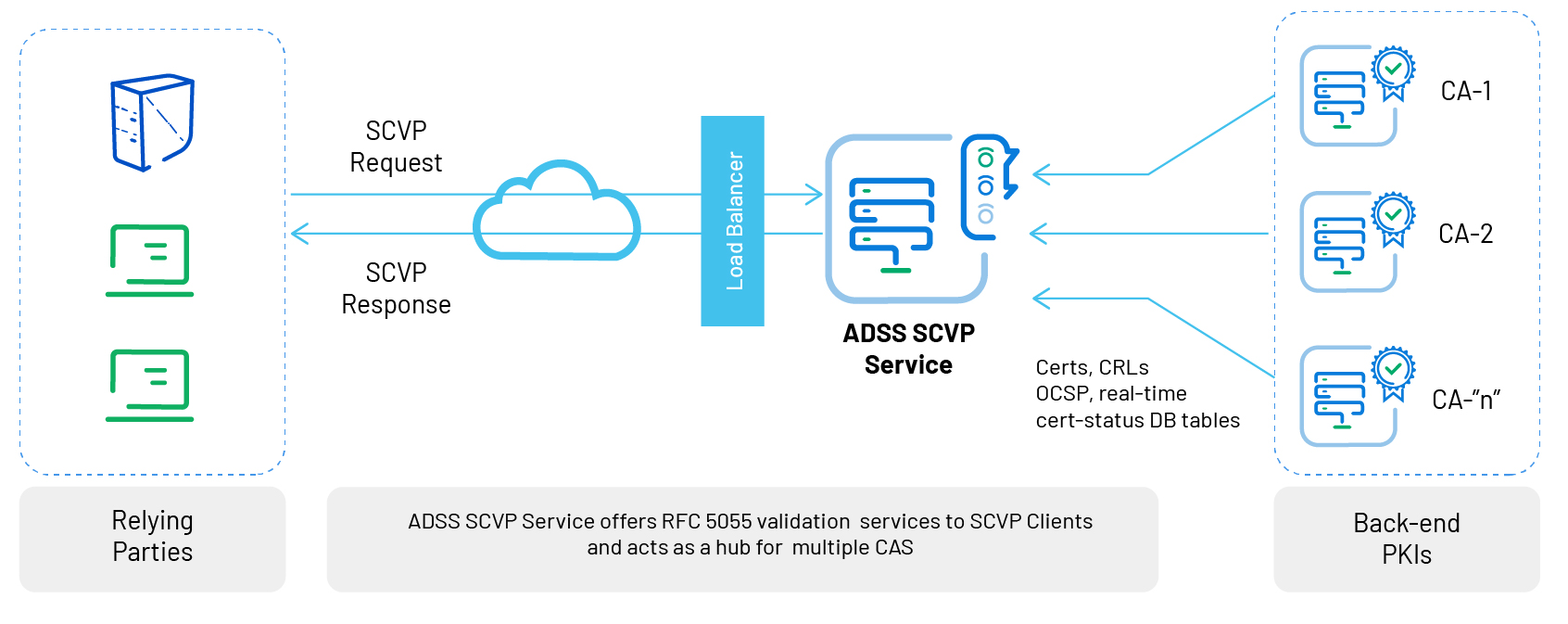ADSS SCVP Service Overview
The ADSS SCVP Service supports the Server-based Certificate Validation Protocol (SCVP), RFC 5055. This is an ASN.1 encoded request/response protocol for determining the path between an X.509 digital certificate and a trusted root; and the validation of that path according to a particular validation policy. SCVP supports two modes of operation which may be used in combination or separately:
- Delegated Path Discovery (DPD); to discover the path between an X.509 digital certificate and a trusted root, and
- Delegated Path Validation (DPV); to validate the path according to a defined validation policy in ADSS Server.
A typical work flow of the SCVP Service is as follows:

- A Relying Party (an end user or client business application) sends a certificate validation request to the ADSS SCVP Service.
- The ADSS SCVP Service performs all the standard certificate validation checks to ensure that the certificate is not expired and was issued by a recognised and trusted CA etc. As part of this certificate validation mechanism, ADSS Server will also request certificate status information from the relevant certificate status provider either in the form of CRLs which it retrieves regularly based on a particular polling policy or through an OCSP request.
- The SCVP response will be composed based on the certificate status and/or the additional information required by the requester in the request.
- The ADSS SCVP Service will then provide a certificate validation response showing the status of certificate in the response as “valid” or “invalid”.
The ADSS SCVP Service can also function in proxy mode, relaying or forwarding the SCVP request to another SCVP Responder.
See also
ADSS SCVP Service
Identity Proven, Trust Delivered
ADSS Server Features and Benefits
ADSS Server Trust Services
ADSS Server Architecture & Interfaces
ADSS Signing Service Overview
ADSS Verification Service Overview
ADSS Certification Service Overview
ADSS OCSP Service Overview
ADSS TSA Service Overview
ADSS XKMS Service Overview
ADSS LTANS Service Overview
ADSS Decryption Service Overview
ADSS CRL Monitor Overview
ADSS Server Features and Benefits
ADSS Server Trust Services
ADSS Server Architecture & Interfaces
ADSS Signing Service Overview
ADSS Verification Service Overview
ADSS Certification Service Overview
ADSS OCSP Service Overview
ADSS TSA Service Overview
ADSS XKMS Service Overview
ADSS LTANS Service Overview
ADSS Decryption Service Overview
ADSS CRL Monitor Overview